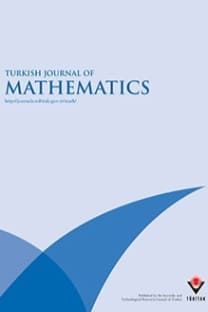On $H$-antimagicness of Cartesian product of graphs
- ISSN: 1300-0098
- Yayın Aralığı: 6
- Yayıncı: TÜBİTAK
Martin BACA, Andrea SEMANICOVA-FENOVCIKOVA, Muhammad Awais UMAR, Des WELYYANTI
Pritikanta PATRA, Sebasish DAS, Rajani Ballav DASH
Seyyede Masoome SEYYEDI, Farhad RAHMATI
An operational matrix method for solving linear Fredholm{Volterraintegro-differential equations
Şuayip YÜZBAŞI, Nurbol ISMAILOV
Dong-Soo KIM, Young Ho KIM, Dae Won YOON
q-counting hypercubes in Lucas cubes
